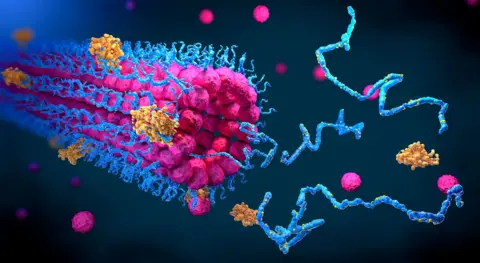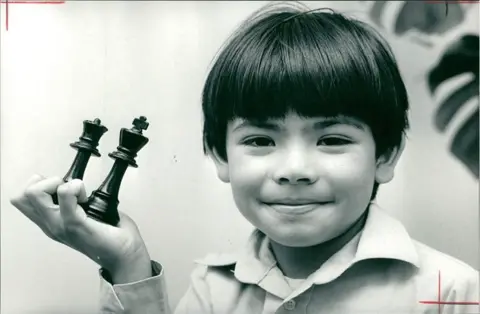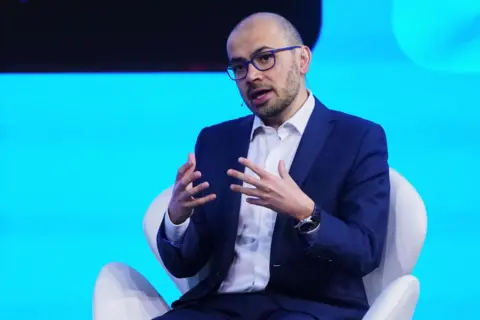British computer scientist Professor Demis Hassabis has won a share of the Nobel Prize for Chemistry for “revolutionary” work on proteins, the building blocks of life.
Prof Hassabis, 48, co-founded the artificial intelligence (AI) company that became Google DeepMind.
Professor John Jumper, 39, who worked with Prof Hassabis on the breakthrough, shares the award along with US-based Professor David Baker, 60.
Proteins are the building blocks of life and are found in every cell in the human body.
Better understanding proteins has driven huge breakthroughs in medicine. It is used in solving antibiotic resistance and to image enzymes that can decompose plastics.
Prof Hassabis said it was the “honour of a lifetime” to receive the Nobel.
“I’ve dedicated my whole life to working on AI because I believe in its potential to change the world,” he said in a press conference on Wednesday.
He said the Nobel committee did not have his phone number. Instead they called his wife, but she ignored the call several times before realising it was a Swedish number and might be important.
He encouraged children to not only play computer games, but also make them, saying that his early gaming was the gateway to his experimentation with AI.
Speaking about being awarded the prize, Prof John Jumper said it felt “so unreal at this moment” but that “the prize represents the promise of computational biology”.
But the Nobel committee also struggled to reach him.
“I got a number from a Swedish number and I absolutely could not believe it. I was really hoping it wasn’t a delivery or something,” he said.
‘A complete revolution’
The pair of scientists used artificial intelligence to predict the structures of almost all known proteins and created a tool called AlphaFold2.
Proteins are made of chains of building blocks called amino acids that each fold in a unique shape. Scientists had long struggled to predict the shape of each of the millions of proteins, but that structure drives what it does in the human body.
Understanding the structure is crucial to knowing how to target the protein and alter its behaviour, which is crucial in medicine.
The Nobel committee called AlphaFold2 a “complete revolution”, and the tool is now used for 200 million proteins worldwide.
Before the pair starting working on the problem, just a tiny fraction of protein structures had been worked out.
 Getty Images
Getty ImagesThe pair received one half of the Nobel prize. The other half was awarded to Prof Baker for what the committee called the “almost impossible feat” of building new proteins.
In 2003 Prof Baker used amino acids to design a new protein, opening the door to the creation of new proteins used in pharmaceuticals, vaccines and other tools.
He too used computer software in predicting protein structures, designing the Rosette programme in the 1990s.
Prof Baker, who works at the University of Washington in Seattle, told the committee shortly after the announcement that he was “very excited and very honoured”.
“I stood on the shoulders of giants,” he said, when asked how he had cracked the code of creating proteins.
He said he was sleeping when the phone rang, and when the announcement was made, his wife “starting screaming very loudly”.
The announcement was made by the Royal Swedish Academy of Sciences at a press conference in Stockholm, Sweden.
The winners share a prize fund worth 11m Swedish kronor (£810,000). Prof Baker will receive half of the award, with the remaining half going to Prof Hassabis and Prof Jumper.
Who is Demis Hassabis?
 BCN
BCNProf Hassabis grew up in London with Greek-Cypriot and Singaporean parents.
He was a child prodigy in chess and reached master standard at the age of 13.
He completed his A-levels aged 16 and was asked by Cambridge University to take a gap year due to his young age.
Before and after graduating in computer science, he worked in computer game design, winning numerous awards.
He then completed a PhD at University College London, before working at several US universities.
In 2010 he co-founded machine learning company DeepMind that was bought by Google in 2014.
It aims to use neuroscience with machine learning to produce powerful algorithms that can be applied to a range of problems.
His work has won numerous awards, now including the Nobel Prize for Chemistry.
















